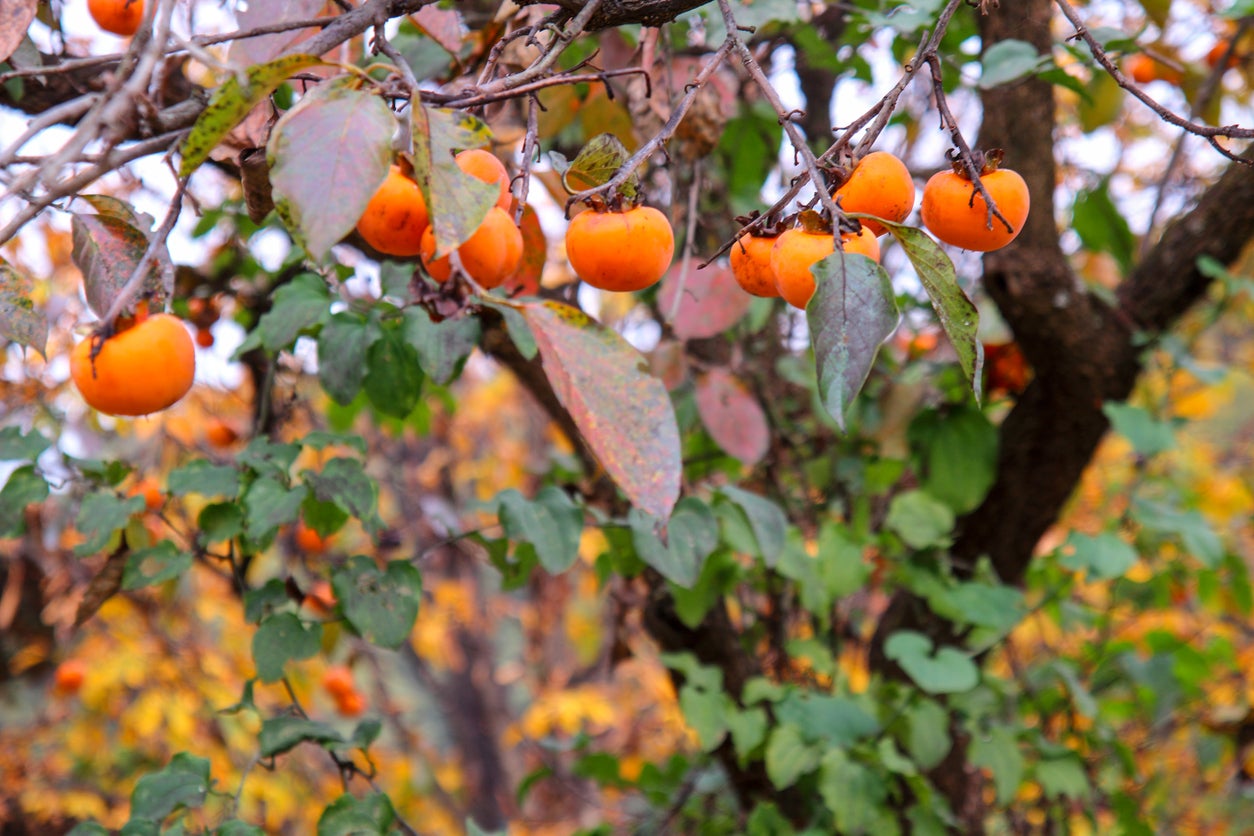Fertilizing Persimmon Trees: Learn About Feeding A Persimmon Fruit Tree


Both oriental persimmon (Diospyros kaki) and American persimmon (Diospyros virginiana) are small, easy-care fruit trees that fit well into a small garden. The fruits are either astringent, fruit that must soften before they are eaten, or non-astringent, eaten hard.
How much fertilizer does a persimmon tree need? The rules for fertilizing persimmon trees are a little different than those for other fruit trees and experts differ on the need for persimmon fertilizer. Read on for more information on persimmon tree feeding.
Fertilizing Persimmon Trees
Many cultivars of persimmon trees are grown on rootstocks that are native plants, so they don’t need a lot of assistance to thrive. That native is the common American persimmon (Diospyros virginiana) that grows in the wild in abandoned pastures in the South.
Feeding a persimmon tree is not always necessary or appropriate. The trees can be very sensitive to fertilizer. Indeed, excess persimmon fertilizer is the primary cause of leaf drop.
When is the Best Time for Persimmon Tree Feeding?
With many fruit trees, gardeners are advised to add fertilizer to the soil when the tree is being planted. However, the advice is different for persimmon fertilizer. Experts suggest that persimmon tree feeding is not necessary at planting time. Fertilizing persimmon trees at the time they are put into the soil is not advised because of the tree’s sensitivity.
Feeding a persimmon should start a few years down the road. Some experts recommend feeding a persimmon tree only if the mature leaves are pale or shoot growth is low. Others recommend fertilizing persimmon trees from the start.
How much fertilizer does a persimmon need? It is suggested that using 1 to 2 cups (240 to 480 mL.) of a balanced fertilizer (like 10-10-10) per year of age is adequate. This should be applied in March, June, and September in the first two years. After that, limit persimmon tree feeding to March and June.
Sign up for the Gardening Know How newsletter today and receive a free copy of our e-book "How to Grow Delicious Tomatoes".
However, this much persimmon fertilizer can cause leaf drop. If it does, adjust the fertilizer accordingly, basing the need for feeding on the tree’s vigor and performance.
Some gardeners assert that persimmon feeding should only be done once a year, either in late winter or else in early spring. Others assert that persimmon tree feeding should occur during the spring growth flush and also during summer. Because of this, you may need to experiment until you find what works for your trees.

Teo Spengler is a master gardener and a docent at the San Francisco Botanical Garden, where she hosts public tours. She has studied horticulture and written about nature, trees, plants, and gardening for more than two decades, following a career as an attorney and legal writer. Her extended family includes some 30 houseplants and hundreds of outdoor plants, including 250 trees, which are her main passion. Spengler currently splits her life between San Francisco and the French Basque Country, though she was raised in Alaska, giving her experience of gardening in a range of climates.